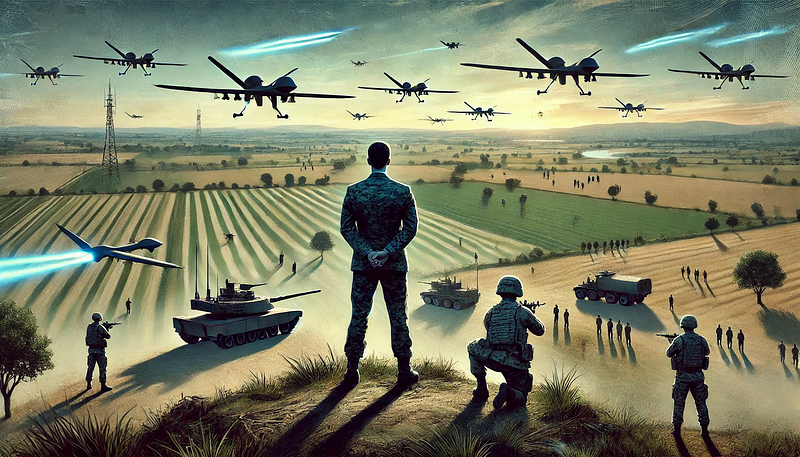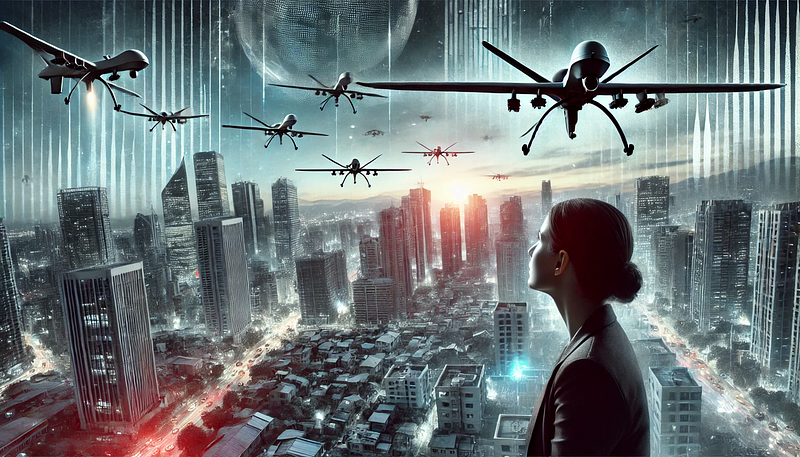The Key to Ukraine’s Dominance in Drone Warfare and Future Conflicts
Written on
Chapter 1: Understanding Ukraine's Drone Supremacy
The drone capabilities exhibited by Ukraine during the conflict with Russia not only showcase its technological prowess in this critical area but also indicate the trajectory of future warfare. This edge results from a combination of factors, including innovation, strategic implementation, and significant international backing. Let's explore the technical aspects that underpin Ukraine's drone advantage.
Ukraine has achieved remarkable success in drone technology due to its sustained focus and investment in aerospace advancements. As a key industrial center of the former Soviet Union, Ukraine inherited an established aviation manufacturing sector, which has continued to evolve since gaining independence. In recent years, the Ukrainian government and military have recognized the crucial role drones play in contemporary warfare, leading to robust support for the domestic drone industry. Companies like Ukrspecsystems and Athlon Avia have produced a range of drone systems tailored to battlefield requirements, enabling rapid responses to military demands and iterative design improvements based on real combat experiences.
The Ukrainian military employs various types of drones for multiple purposes, maximizing their combat capabilities.
This paragraph will result in an indented block of text, typically used for quoting other text.
Section 1.1: Diverse Applications of Drones
In the front lines, small drones are extensively utilized for reconnaissance, providing timely intelligence to inform command decisions. Modified commercial drones can deliver small explosives for precision strikes against enemy personnel and equipment. Specialized drones equipped with electronic jamming devices disrupt enemy communications and navigation. Larger drones are tasked with transporting supplies and medical materials, thus minimizing the risk of casualties. This comprehensive drone application strategy has significantly bolstered the Ukrainian army's combat effectiveness.
Section 1.2: International Support and Technological Synergy
Western nations, particularly the United States, have supplied Ukraine with advanced drone systems and technical assistance, enhancing its operational capabilities and fostering the growth of local drone technology. Notably, the AeroVironment Switchblade suicide drone and Phoenix Ghost drone have substantially improved Ukraine's precision strike capabilities. Additionally, the Bayraktar TB2 medium-sized armed drone from Turkey played a pivotal role early in the conflict, proving instrumental against Russian armored units.
Chapter 2: Tactical Innovations and Challenges
The Ukrainian military has displayed remarkable tactical creativity, adeptly utilizing drones to adapt to various combat scenarios and mission requirements. Small drones often collaborate to create a "swarm" effect, effectively bypassing enemy air defenses. By integrating drones with manned platforms, Ukraine enhances combat efficiency and survivability. Utilizing low-cost drones to target high-value enemy assets exemplifies a strategy that achieves significant victories with minimal expenditures.

This adaptable tactical application fully exploits the advantages of drones while revealing the shortcomings of the Russian military in adapting to these new combat strategies. In contrast, Russia appears inadequately prepared for drone warfare. Although it possesses drone systems like the Orlan-10, it falls short of Ukraine in both quantity and quality. Russian drones primarily focus on reconnaissance and lack substantial offensive capabilities. Furthermore, their electronic warfare and air defense systems struggle to counter small, low-flying modified commercial drones.
Section 2.1: Vulnerabilities and Adaptive Responses
The proliferation of drone technology has also highlighted certain vulnerabilities. Early in the conflict, when Ukraine deployed commercial drones to support artillery attacks on Russian tank formations, it quickly discovered that Russian forces were able to pinpoint and target drone operators swiftly. This led to significant losses as Russian artillery and missile systems, capable of rapid-fire attacks, targeted Ukrainian drone operators effectively.
Ukraine soon recognized that Russia was exploiting a vulnerability inherent in drone operations to locate and eliminate their operators. This issue arises from a common security weakness in commercial drones, where certain nations maintain protected airspace, allowing manufacturers to track drone operators' locations. Through a technique known as backdoor ID, electronic signals emitted by drones can reveal the operator's position, exposing many of the prevalent drones in use today.
To address this challenge, Ukrainian researchers developed an open-source software solution that enables drone pilots to conceal their locations from tracking systems.

This software, activated by a simple command within the drone's firmware to toggle remote ID on or off, has become an essential tool for safeguarding drone operators, symbolizing Ukraine's commitment to addressing wartime challenges through technological innovation. The recent advancements in Ukraine's drone capabilities within Russian territory suggest successful collaboration with Western partners to mitigate these security risks or to replace vulnerable drones.
Section 2.2: Implications for Future Warfare
This technological competition underscores the significance of innovation in future conflicts. Ukraine's achievements in drone warfare offer critical insights for the evolution of modern military strategies. The effectiveness of modified commercial drones demonstrates that high-tech, expensive weapons are not the only contributors to success in contemporary warfare. Battlefield demands drive rapid technological advancements, necessitating military-industrial systems to respond swiftly.
The emergence of small, decentralized drone systems challenges traditional centralized combat strategies. Future operations will likely hinge on the integration of drones and manned platforms, while the growing prevalence of drones amplifies the importance of electronic warfare and anti-drone technologies.
